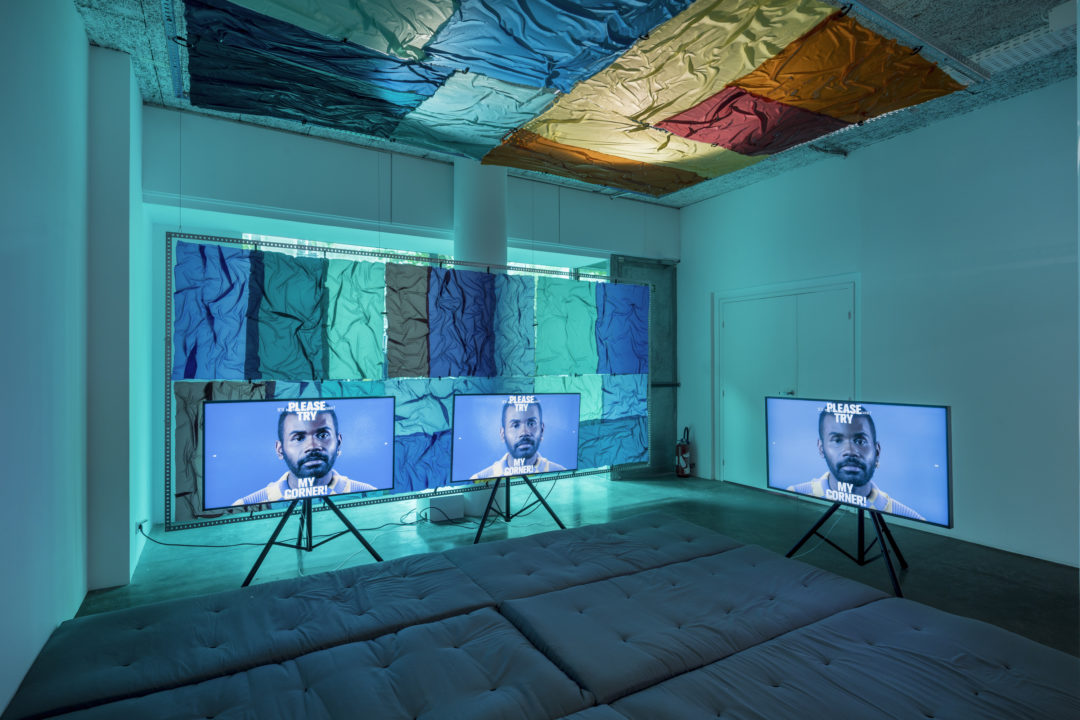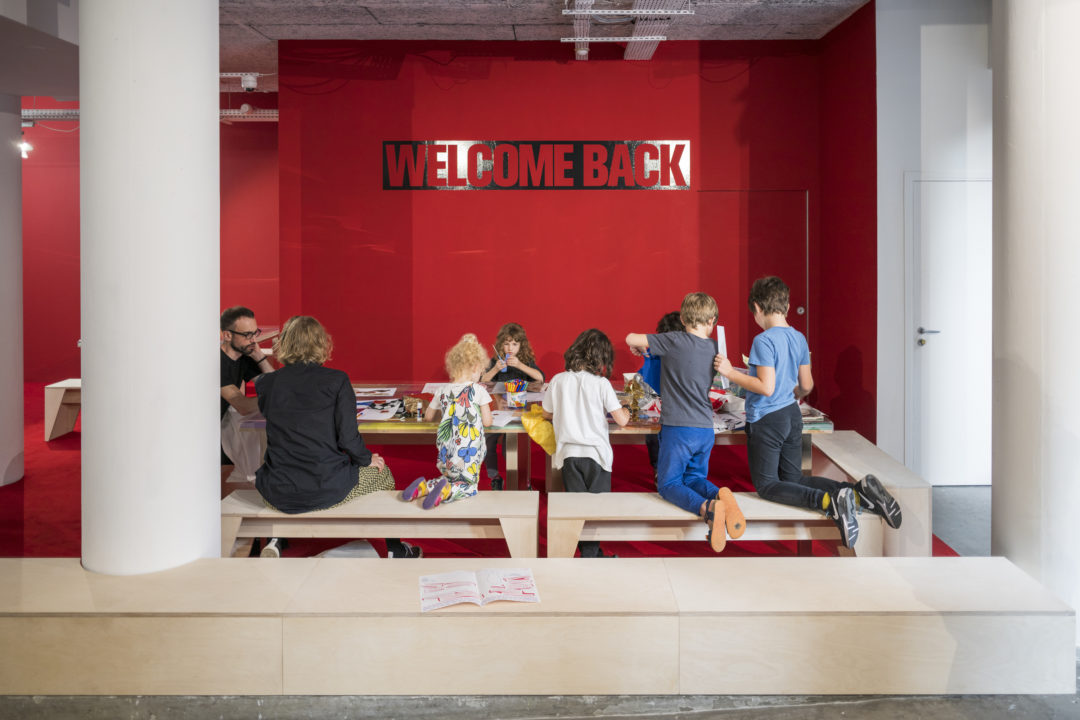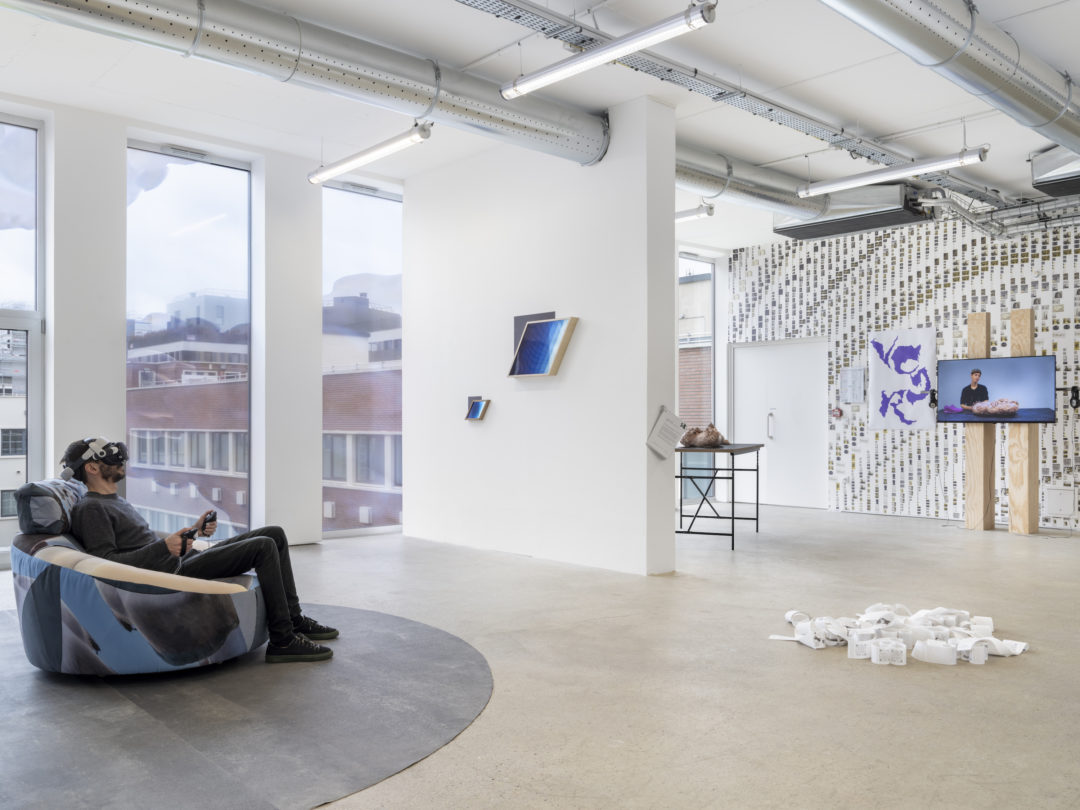Céline Poulin

A Thousand and One Plateaus
Céline Poulin, Director of Frac Île-de-France
Created in 1982, the Frac Île-de-France, like the twenty-two other Fracs, was born out of a desire for decentralisation, and has established itself in the landscape of institutional contemporary art as a tool for supporting creation, cultural development of the region and raising public awareness, particularly through the mobility of the collections that characterises them. Céline Poulin has been appointed Director of the Frac Île-de-France in spring 2023. Since 2016 she has been director of the CAC Brétigny and was previously in charge of off-site programming at the Parc Saint-Léger. She has been guest curator with the Le Bureau/ collective at the Villa du Parc in Annemasse, the DAZ in Berlin in partnership with the Institut français, the Synagogue de Delme and the Casino Luxembourg – Forum d’art contemporain, among others. She succeeds Xavier Franceschi, who has been at the helm of the Frac Île-de-France for sixteen years. Her management project, entitled “A Thousand and One Plateaus”, aims to make this art gallery a living space that can best respond to users and that breathes life back into the heart of the institution.

From 2016 to 2023 at the CAC Brétigny and since 2023 at the Frac, the three watchwords of your management projects are: exhibition, communication and mediation. Do the nature of these institutions and the challenges they face change the meaning and reality of these three themes? And if so, how?
For me, it’s a methodology of work, research and production that is situated. This means that I see mediation and communication as creative spaces in their own right, artistic spaces. The meaning remains the same, but it’s the embodiment that will be different. The way in which this methodology is embodied has a lot to do with the territory in which these spaces are set up, and also has a lot to do with the users for whom mediation and communication are intended. It also depends on the people I work with, their personalities and their subjectivity. By users, I mean the people who come to see the exhibitions, but also the team, the artists, the curators, all the people who use the space.
At the CAC, I was able to experiment with programming with a great deal of freedom, particularly with the setting up of the Ǝcole, conceived as a space for collective research and free practice1. As soon as I arrived at Le Plateau, I set up this space, which leads to the exhibition and is permanently accessible, for practices that are sometimes guided by artists during meetings and workshops, but more generally for resolutely free and autonomous practices.
What do you mean by the term ‘communication’? Dissemination of information? The way it is addressed? Do you mean, for example, thinking up other ways of communicating with people in the social field? Tools other than emails and codified, bureaucratic forms of communication?
Communication makes it possible to clearly define messages and to navigate through the diversity of actions carried out and their formats. We choose to communicate in different ways, with a digital address for users people who already know us, and with paper flyers for local audiences, particularly in Romainville.
That’s why it’s important to leave room for creative graphic design. I entrusted this work to Félicité Landrivon, so that communication is born of graphic creation.
Communication also extends to meetings and direct conversation, particularly outside the institution. This is also where communication becomes an artistic space, because artistic forms create encounters. For Tony Regazzoni’s dance marathon, we met with local shopkeepers to create special prizes to be won. Finally, there’s the importance of writing, in communication and mediation. For “Vieilles coques et jeunes récifs”, we chose a poetic text as an introduction to the exhibition, emphasising the involvement of the senses and not just the visual. Finally, we are currently working with Tram on adapting our tools and the exhibition space for people with disabilities. A work co-created by Nicolas Faubert & Mona Young-eun Kim with the CAC Brétigny, presented in the current exhibition, addresses this issue.
You mention the importance of the people you work with. What new working habits would you like to encourage? You’re keen to blur statuses, particularly artistic status. How can this be transposed to a team of twenty-five people?
For Ndayé Kouagou’s inaugural exhibition, the mediation and communications teams were invited to the first working meetings. This creates a bond, a closeness right from the start of the discussions, but it also enhances the work of the teams, because everything works together. I can’t think about an exhibition without thinking about how it will be received and how it will exist in the bodies and eyes of the people who will visit it. This brings us back to the idea of use, and it is the people who have been working at the Frac for a long time who know this use, who have knowledge to pass on to the artist or to me.
For the current off-site programme, we started with an initial pitch that I deliberately kept short and open. Each member of the team interprets this subject in their own way, with their own perspective, in conversation with specific partners and contexts. It’s a way of sharing the curatorship, of creating other narratives. I had already experimented with this with ‘The Real Show’, an exhibition co-curated with Agnès Violeau.

For the Frac, you say you want to “de-hierarchise practices and spaces”. What has this meant since your arrival? Architecturally, how do you welcome and support new modes of sociability? Are other functions possible for the space?
Sharing the curatorship also means going beyond the exhibition format and breaking out of the binarity between inside and outside the walls, between work and activity. It’s conceptually problematic to set them against each other, to hierarchise them. For ‘Vieilles coques et jeunes récifs’, all the events on offer at Le Plateau, in the reserves and in partner venues are part of the same constellation, involving workshops and the appropriation of works or mediation by users.
Like the free practice space, these events bring other, more active and spontaneous forms of social interaction into the exhibition space. The artists are also taking advantage of the spaces to develop other functions and transform the exhibition into a place where people feel welcome, where they can stay and rest. Camille Juthier is currently proposing a boxing ring that doubles as a bed; Ndayé Kouagou has also designed a space with mattresses on the floor, inviting visitors to come and rest in his corner. The important thing is to desacralise the relationship with art, while at the same time becoming part of a pre-existing ecosystem.
The Frac is anchored in a triple territory: the city of Paris, Romainville and the Île-de-France region. How do you intend to cover this vast area, with its many variations and needs? How do you ensure that the public take an active part in the programming?
The Audience Department is working on partnerships with local organisations, which often ask for our help. We think about how needs, desires and artistic practices can come together. We develop artistic experiments that fall within the traditional field of mediation practices, such as workshops, that could be described as “creative participation”.
We also run co-creation projects. For example, for ‘Vieilles coques et jeunes récifs’, we were approached by the AP-HP addictology department and came up with a co-creation project with the artist Garance Früh.
Often, co-creation is a catch-all word. What we mean by co-creation, with Marie Preston, is “collaborative participation” – to use the term defined by Pablo Helguera. This means sharing responsibility for the structure and content of the work in collaboration and direct dialogue with the artist.
Is the Frac model, created in 1982 in an idealisation of the encounter and autonomy of the work, compatible with the co-creation paradigm?
Lacan had this to say about love, which seems to me to correspond very well to co-creation: “We offer things we don’t have to people who don’t want them. The participants are sometimes brought together for various reasons that they don’t necessarily share. And yet, something happens that often resembles art. With Fanny Lallart, during the “ELGER” project at CAC Brétigny (2020-2022), we identified several issues: those that are formulated, those that are unformulated and those that are fantasised.
Co-creation means that there is no final objective and that failure is possible, and at institutional level, it’s complicated to set up real co-creation processes, because it takes a long time and we don’t know what the outcome will be. It’s part of our activities at the Frac, but it can’t be all of them, because the institutional and ideological issues are not the same.

Following on from the pedagogical turn, how would you describe this institutionalisation of co-creation, with a proliferation of examples between the last documenta 15 and the creation of hamo at the Palais de Tokyo?
For twenty years now, things have been evolving considerably in terms of mediation, under the impetus of curators such as Claire Le Restif, Pierre Bal-Blanc, Sandra Patron, Julie Pellerin… to the point of constituting a part of institutional history. Cultural rights have also prompted more reluctant institutions to take an interest in questions of relationships with others, making way for artists whose practices are relational. Today, with examples such as documenta 15, we are seeing a blurring of the status of the work. Participation as shown at documenta calls into question the status of the object and avoids the commodification of the encounter. Encounters and spaces for conversation are finally becoming recognised forms of creation and plastic forms.
With Marie Preston and Katia Schneller, we are working on a book entitled Faire alliance, which will look at the new pedagogical practices being developed by a whole generation of artists and social workers, generally from working-class backgrounds, such as Ndayé Kouagou and Laura Burucoa (currently in residence at the Frac), who are developing what I call “alterism”. In other words, collaborative practices that make the boundaries of the institution permeable and become instituting practices, because they create work processes linked to the attention you pay to others.
The challenge is to legitimise sociocultural practices and popular education practices in the history of art, by proposing new evaluation methodologies and scientific analysis tools other than conventional aesthetic tools.
One of the differences between the CAC Brétigny and the Frac is the principle of collecting. For the institution’s 40th anniversary, you organised a joint exhibition to review the collections. How would you like to continue this work on the collections?
The idea of re-reading the collection is at the heart of my management project. “A Thousand and One Plateaus” is all about breaking down the hierarchy of spaces, but it’s also about opening up narratives and ways of retelling a collection, like in A Thousand and One Nights. I’ve been interested in collections ever since the first exhibition we put together with the Le Bureau/ collective, based on the Cnap collection and entitled ’35 heures’, which was presented at the Laboratoires d’Aubervilliers. The way the works were brought together gave rise to different meanings each time, transforming the way we looked at them and the way we told our story.
With a collection like that of the Frac, it’s extremely fertile to re-read historical works in the light of current social issues, to show connections with more recent works. By working together, through co-commissioning with the team or with guest curators, we multiply subjectivity and polyphony.

Have you also set yourself the goal of thinking and acting in the collection in terms of co-creation?
Yes, absolutely. One of the challenges of the acquisition commissions is to integrate co-creation practices, “works of use”, movable works: a recipe, a score to be activated… Works that, in another era, would have been called “interactive”.
I also want to bring more video works into the collections. It’s an extremely innovative medium that I really like, close to younger audiences who are used to a predominantly image-based regime. It’s a medium that’s easy to access and easy to move around – based on ecological considerations.
Of course, the emphasis will also be on works created in the Paris region, and I’ve decided to open up the acquisition process to unsolicited applications, as well as to more inclusive collecting practices to bring other perspectives to the collection, along the lines of the Frac Bretagne or the Fonds d’art contemporain – Paris Collections.
What human, social and artistic responsibility do you wish to assume for creation in your role as Director of Frac Île-de-France?
There’s a phrase by Marina Garcés that I’m very fond of and that fits in quite well with the way I see things. For her, there’s nothing worse than an artist or academic who says he’s interested in something. It’s either about you or it’s not. And that’s really what it is for me. In other words, it’s not a matter of interest, it’s visceral. Feeling concerned means stepping in, putting yourself out there, taking risks. This is where the encounter with otherness takes place, at my level, at the level of the artists, the team and then the people who live around the venue. When I explain it like that, it immediately sounds grandiloquent, but in reality it’s slow, it’s small and it’s nothing more than an investment in the banality of everyday life.
1. Milène Denécheau, Élisa Klein, Marie Plagnol and Céline Poulin, “Entretien sur l’Ǝcol”, La surface démange, Villa Arson, 2024 : https://lasurfacedemange.villa-arson.fr/articles/entretien-sur-l%C7%9Dcole

Head image : Vue de 40 ans du Frac ! Exposition Gunaikeîon, Frac Île-de-France, Les Réserves, Romainville © Martin Argyroglo
Related articles
Émilie Brout & Maxime Marion
by Ingrid Luquet-Gad
Interview with Warren Neidich
by Yves Citton
La Contemporaine at Nîmes, Anna Labouze & Keimis Henni
by Elora Weil-Engerer

